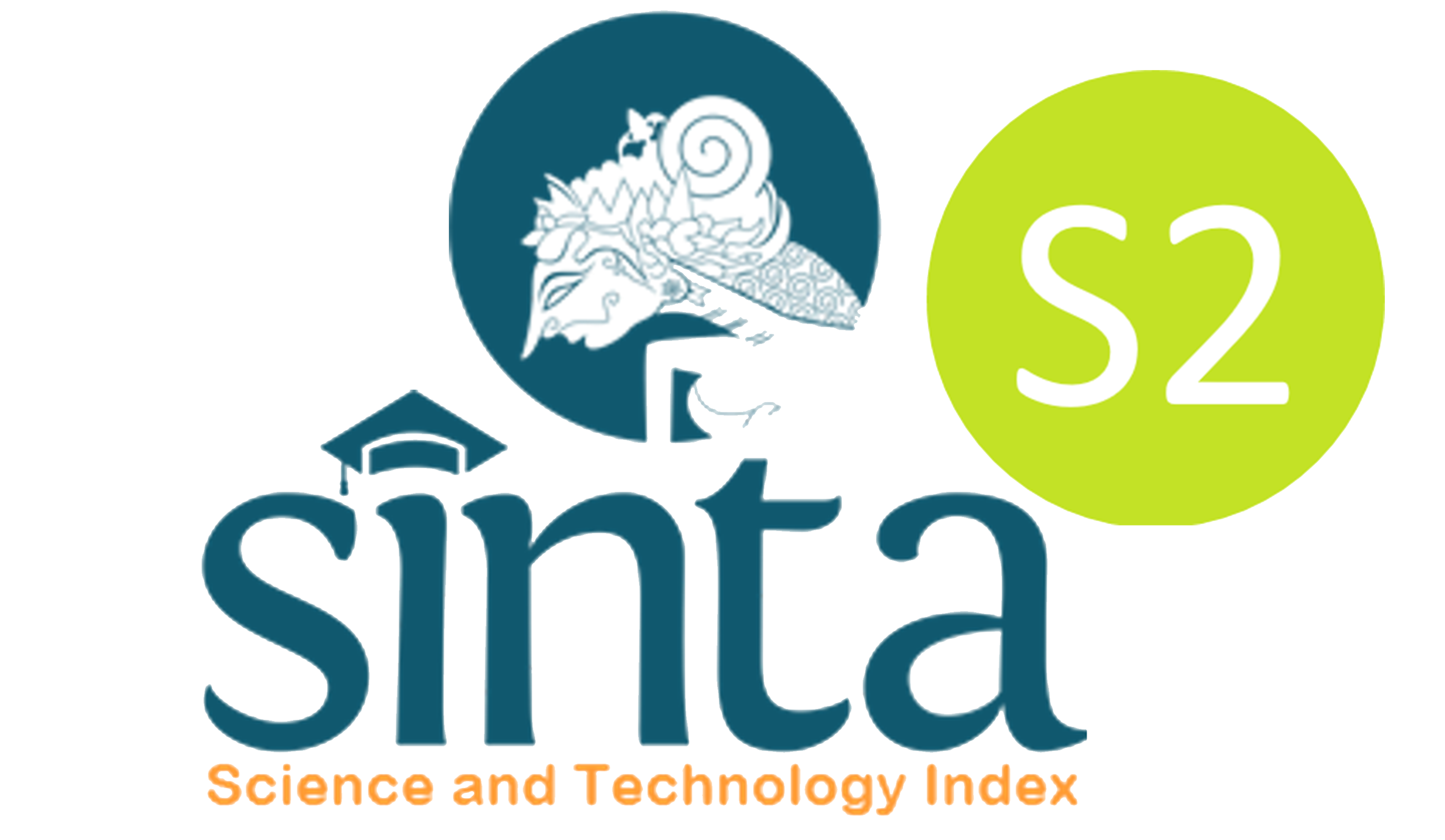Evaluation of Employee Acceptance of the IMS Application at PT Sarana Utama Adimandiri: TAM Approach
Sancoko Sancoko(1*); Zahra Shalsabilla Prayogi(2); Badra Al Aufa(3); Rahmat Yuliawan(4);
(1) Universitas Indonesia
(2) Universitas Indonesia
(3) Universitas Indonesia
(4) Universitas Airlangga
(*) Corresponding Author
AbstractPT Sarana Utama Adimandiri (SUA) which is engaged in the construction sector implements an IMS application in its purchasing activity. This paper aims at describing the evaluation of employee acceptance of the information system at PT SUA using the Technology Acceptance Model (TAM) approach. TAM has two main variables i.e: perceived usefulness and perceived ease of use which function as independent variables, while the dependent variable is acceptance of IT (integrated management system/IMS applications). The population and sample in this study were all employees of PT SUA, which was used to obtain research data through the distribution of structured questionnaires. The instrument was tested using validity and reliability tests, and data was analyzed by using spearman rank test. This study suggests that there is a strong effect of perceived usefulness and perceived ease of use on acceptance of IT. KeywordsSystem; Information; Perception; Technology; TAM
|
Full Text:PDF |
Article MetricsAbstract view: 428 timesPDF view: 175 times |
Digital Object Identifier https://doi.org/10.33096/ilkom.v14i1.1120.74-79 https://doi.org/10.33096/ilkom.v14i1.1120.74-79
|
Cite |
References
M. Mokhsin, Z. A. Shaffiei, S. R. Hamidi, and N. M. Yusof, Measurement of users acceptance and perceptions towards Campus Management System (CMS) using Technology Acceptance Model (TAM), Int. J. Inf. Process. Manag., vol. 2, no. 4, pp. 3446, 2011.
A. Ahmad, Perkembangan Media Online dan Fenomena Disinformasi (Analisis pada Sejumlah Situs Islam), J. Penelit. Komunikasi, Inform. dan Media Massa, vol. 16, no. 3, pp. 177186, 2013.
O. S. Simanjuntak, Pengembangan Technology Acceptance Model (TAM) Sebagai Upaya Pemberdayaan Masyarakat Menuju Masyarakat I nformasi, Telemat. J. Inform. dan Teknol. Inf., vol. 8, no. 1, Apr. 2015.
H. Antonio and N. Safriadi, Rancang Bangun Sistem Informasi Administrasi Informatika (SI-ADIF), J. ELKHA, vol. 4, no. 2, pp. 1215, 2012.
T. Sutabri, Konsep Sistem Informasi, Ist. Yogyakarta: Penerbit ANDI, 2012.
S. D. Anggadini, Analisis Sistem Informasi Manajemen Berbasis Komputer Dalam Proses Pengambilan Keputusan, Maj. Ilm. UNIKOM, vol. 11, no. 2, pp. 176187, 2013.
A. D. Madden, A definition of information, Aslib Proc., vol. 52, no. 9, pp. 343349, 2000.
Jeperson Hutahaean, Konsep Sistem Informasi. Yogyakarta: Deepublish, 2014.
L. Ahmad, Sistem Informasi Manajemen buku referensi. Banda Aceh: Penerbit Lembaga Komunitas Informasi Teknologi Aceh, 2018.
Y. Utami, A. Nugroho, and A. F. Wijaya, Perencanaan Strategis Sistem Informasi dan Teknologi Informasi pada Dinas Perindustrian dan Tenaga Kerja Kota Salatiga, J. Teknol. Inf. dan Ilmu Komput., vol. 5, no. 3, p. 253, 2018.
J. Sarkis and R. P. Sundarraj, Factors for strategic evaluation of enterprise information technologies, Int. J. Phys. Distrib. Logist. Manag., vol. 30, pp. 196220, 2000.
V. Symons, Evaluation of Information Systems: Is Development in the Processing Company, J. Inf. Technol., vol. 5, no. 4, pp. 194204, 1990.
R. N. T. Brian J. Kaleb, Victor P.K Lengkong, Penerapan Sistem Informasi Manajemen Dan Pengawasannya Di Kantor Pelayanan Pajak Pratama Manado, J. EMBA J. Ris. Ekon. Manajemen, Bisnis dan Akunt., vol. 7, no. 1, pp. 781790, 2019.
P. Surendran, Technology Acceptance Model:A Survey of Literature, Int. J. Bus. Soc. Res., vol. 2, no. 4, pp. 175178, 2012.
P. Lai, the Literature Review of Technology Adoption Models and Theories for the Novelty Technology, J. Inf. Syst. Technol. Manag., vol. 14, no. 1, pp. 2138, 2017.
F. Sayekti and P. Putarta, Penerapan Technology Acceptance Model (TAM) Dalam Pengujian Model Penerimaan Sistem Informasi Keuangan Daerah, J. Manaj. Teor. dan Ter. J. Theory Appl. Manag., vol. 9, no. 3, pp. 196209, 2016.
Y. He, Q. Chen, and S. Kitkuakul, Regulatory focus and technology acceptance: Perceived ease of use and usefulness as efficacy, Cogent Bus. Manag., vol. 5, no. 1, 2018.
D. N. Sari, M. Suprayogi, and M. Azwar, Analysis of the Technology Acceptance Model on The Union Catalog Server based the Senayan Library Management System within the Library of the Ministry of Marine Affairs and Fisheries of Indonesia, Libr. Philos. Pract., vol. 2021, pp. 118, 2021.
Sugiyono, Metode Penelitian Kuantitatif, Kualitatif dan R&D. Bandung: Alfabeta, 2017.
F. D. Davis, Perceived usefulness, perceived ease of use, and user acceptance of information technology, MIS Q. Manag. Inf. Syst., vol. 13, no. 3, pp. 319339, 1989.
Surachman Arif, Analisis Penerimaan Sistem Informasi Perpustakaan (Sipus) Terpadu Versi 3 Di Lingkungan Universitas Gadjah Mada (UGM), Perpust. Digit. UIN Kalijaga Yogyakarta, vol. 1, no. 2, pp. 130, 2008.
Zulganef, Pemodelan, Persamaan Struktur dan Aplikasinya dalam AMOS 5. Bandung: Penerbit Pustaka, 2006.
Imam Ghozali, Model Persamaan Struktural, Konsep dan Aplikasi Dengan Program AMOS 16. Semarang: Badan Penerbit Universitas Diponegoro, 2011.
D. Wirdasari, Mengenal Teknik-Teknik Keamanan Komputer Dan Model- Model Serangannya ( Security Attack Models ), Secur. Attack Model., vol. 4, no. 1, pp. 111119, 2008.
O. Safianu, F. Twum, and J. B., Information System Security Threats and Vulnerabilities: Evaluating the Human Factor in Data Protection, Int. J. Comput. Appl., vol. 143, no. 5, pp. 814, 2016.
Refbacks
- There are currently no refbacks.
Copyright (c) 2022 Sancoko Sancoko

This work is licensed under a Creative Commons Attribution-ShareAlike 4.0 International License.










